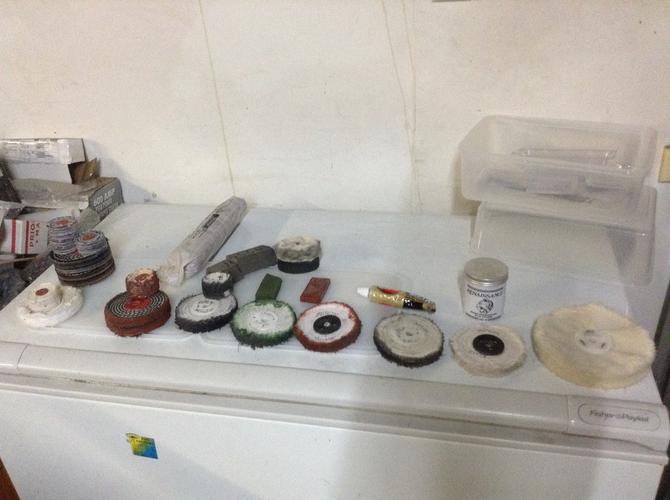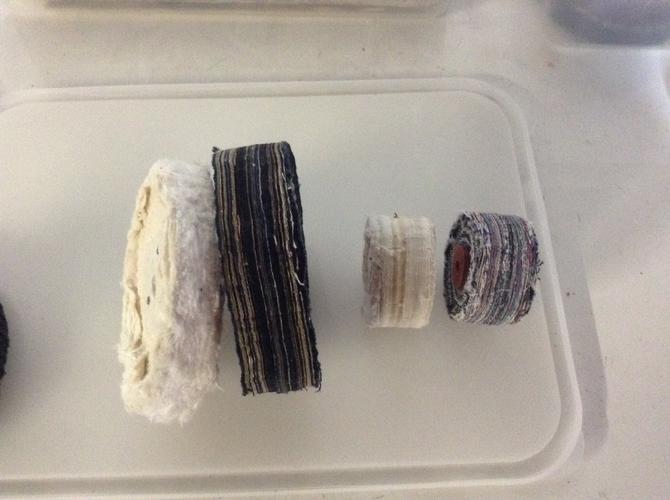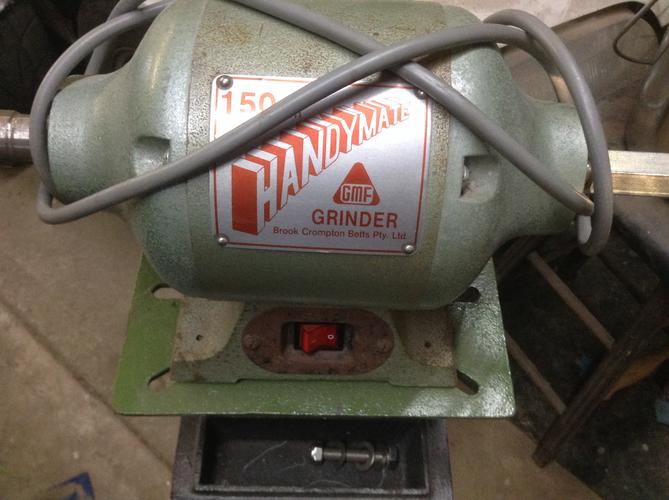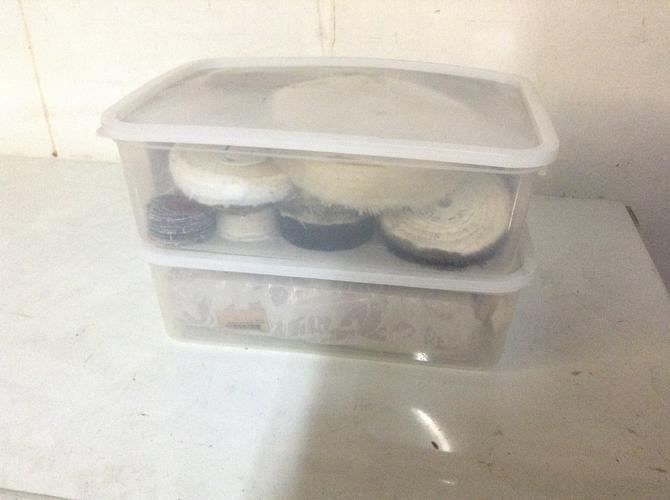Results 11 to 20 of 29
Thread: What size buffer wheels
-
08-04-2015, 12:37 PM #11

That is something else I have been trying to figure out the difference between wheels. Cotton, muslin, calico swansdown etc. Cotton is pretty popular but I can get calico, swansdown and muslin locally.
Last edited by eddy79; 08-04-2015 at 12:51 PM.
My wife calls me......... Can you just use Ed
Can you just use Ed
-
08-04-2015, 12:43 PM #12

I think the muslin is like sisal and to course for str8s - correct me if I'm wrong
My white stitched are cotton and fairly loose and soft
The denim is rather tight and stiff
The calico is a bit courser than the cotton
The swansdown are super softSaved,
to shave another day.
-
The Following User Says Thank You to Substance For This Useful Post:
eddy79 (08-04-2015)
-
08-07-2015, 10:57 AM #13

I think there is an important consideration in wheel size - in terms of what you are going to apply to them. As an example, grease-less compounds need to dry to a hard/crusty state, therefore you would be better using the 3" cotton mops in order to get into the blade hollows. On the other hand, polishing compounds still leave the mops with enough flexibility to get into hollows even with bigger mops.
Bear in mind, the bigger the mop, the greater the surface speed, so watch out when polishing man made materials as you can easily get 'flats' from heat build up. As Mainaman pointed out - low pressure is the key.My service is good, fast and cheap. Select any two and discount the third.
-
The Following User Says Thank You to UKRob For This Useful Post:
eddy79 (08-07-2015)
-
08-07-2015, 02:14 PM #14

At the moment I use a dremel with attachments I get from a jewellers supply. They are little rubber like discs of sic in various grits. I dont remove all pitting just the exvess and think to start I will work from the emery compound up. If I find that isn't enough I will look to greaseless. I try to buy blades in reasonable condition to start with so many wouldn't need something super aggressive. Need to look into greaseless availability as well. Caswells here go from 320 greaseless to emery and I am unsure of this jump as many seem to go to 600 greaseless
My wife calls me......... Can you just use Ed
Can you just use Ed
-
The Following User Says Thank You to eddy79 For This Useful Post:
MikeT (08-07-2015)
-
08-07-2015, 02:40 PM #15

Yeah the 600 is the highest greaseless I've found but there are dry blocks that take it from there. I'm trying to stay away from the table grinder as I'm not that happy with the finish until i can find better wheels and learn to perfect it. I'm discovering that its best to use a number of techniques and tools. Right now I'm focusing more on hand sanding and rediscovering the value of a Dremel used right.
Thanks for the tip on the jewellers wheels!“You must unlearn what you have learned.”
– Yoda
-
08-07-2015, 03:18 PM #16Senior Member



- Join Date
- Apr 2012
- Location
- Diamond Bar, CA
- Posts
- 6,553
Thanked: 3215
As you have said, a lot depends on the condition of the object to be polished and what the goal is, metal removal or polish. You can remove deep pitting with low grit Greaseless, but hand sanding gives you much more control and if it needs that much work… those are decisions best made at purchase.
Cotton wheels work best in all but, very low grits, a loose cotton wheels works well for final polish, I use 6&8 in. I final finish, by hand with Novus and other metal polishes.
A good tip is to buy at least, 2 wheels, for each Greaseless and greased grit, so one is drying, as the other is in use. Buff bare handed and quench frequently in water at the slightest rise in heat, if it is uncomfortable, it is too hot.
600 greaseless is a great for cleanup of most blades, I actually keep 3 sets of 600 wheels so that I always have a “worn” 600 greaseless wheel for general cleaning. (Great for Jimps), 600 scratches buff out easily and if it needs more grit, it will be readily visible.
Castwell’s does have a good buffing tutorial here, hidden at the lower left bottom of the home screen, (Not a fan of their new website).
Do buy the wheel rake and use often to keep clean, fluffy and easily accept compound. Rake new wheel well and cut off threads with a sharp scissor before loading.
Use a lite hand and do pay attention to your position on the wheel, as you get more experience you can experiment with positioning, but be well aware of the danger, weigh the risk vs reward, error on the side of safety. A heavy cardboard padded bench and backboard is good insurance and keeps the shop clean. Make a Cereal box loading splatter guard to keep compound off the walls and you.
-
-
08-07-2015, 09:02 PM #17

As Euclid says - keep your fingers well away from the wheel. But when you get to the stage when that makes sense to you, you will know just as well.
My service is good, fast and cheap. Select any two and discount the third.
-
08-08-2015, 02:29 AM #18
-
The Following User Says Thank You to eddy79 For This Useful Post:
MikeT (08-08-2015)
-
08-08-2015, 06:45 AM #19

My options
400 greaseless, grey tripoli, green Chrox, red rouge/ferrox, Autosol, RenWax and then the clean Calico

The denim vs cotton before any use the denim is a lot firmer

My converted grinder

My storage system so I don't get foreign grits on my wheels LOL

Last edited by Substance; 08-08-2015 at 07:02 AM.
Saved,
to shave another day.
-
-
08-08-2015, 09:52 AM #20

Thanks for the pictures and info. I plan to get the kit from caswells that goes from emery through to white. Think its six bars so should be a fairly good range. Maybe with that yhe jump from 320 greaseless to emery isn't that much and should be fine.
My wife calls me......... Can you just use Ed
Can you just use Ed


 37Likes
37Likes LinkBack URL
LinkBack URL About LinkBacks
About LinkBacks






 Reply With Quote
Reply With Quote
